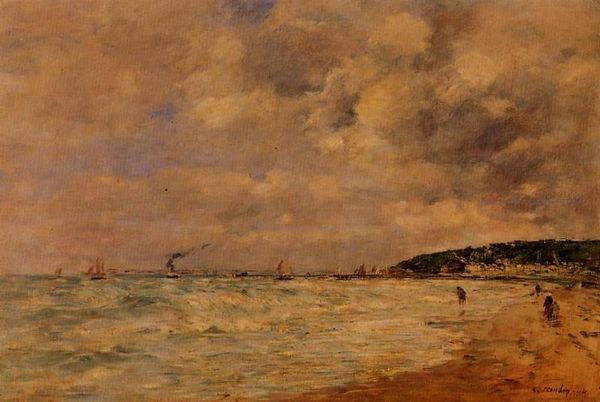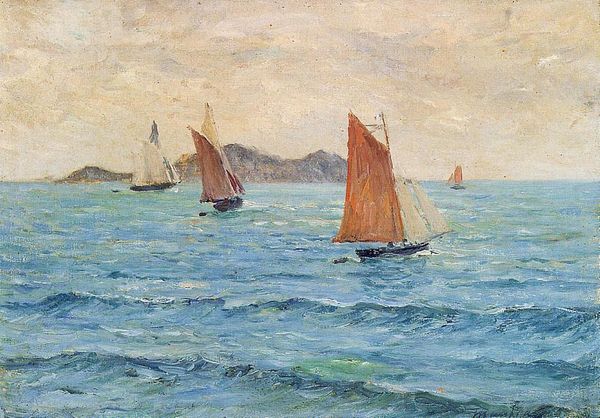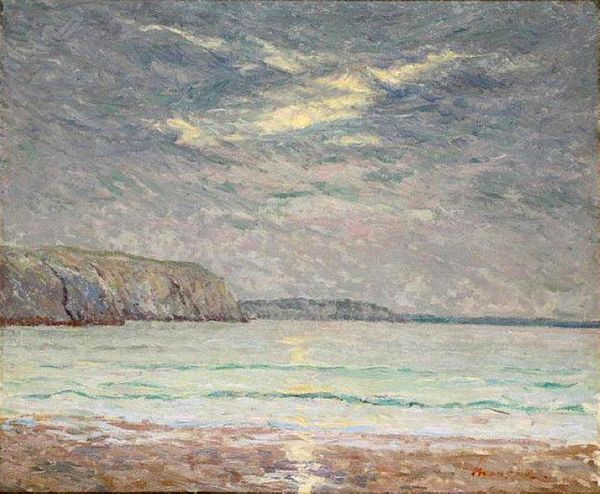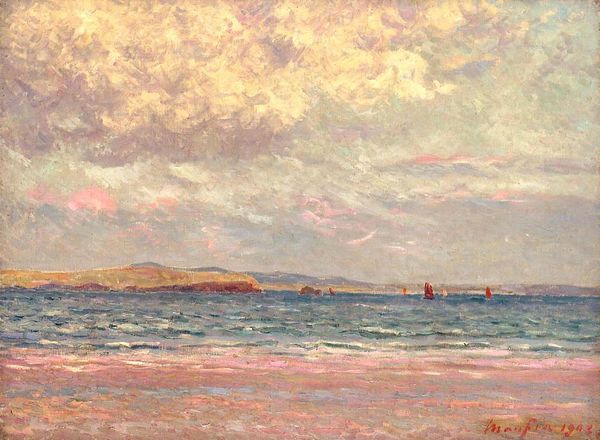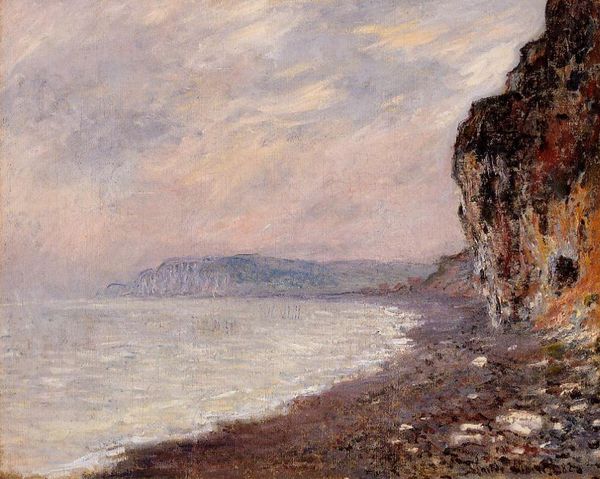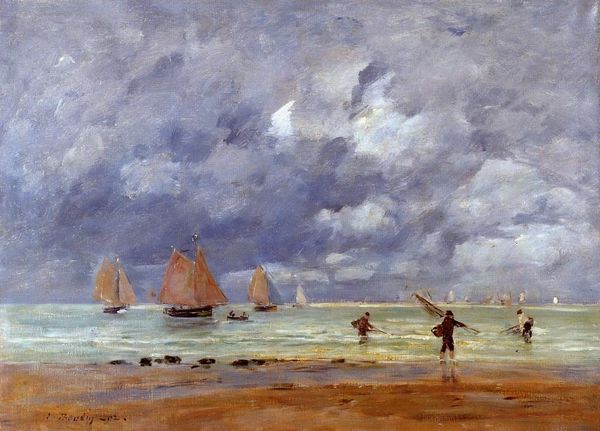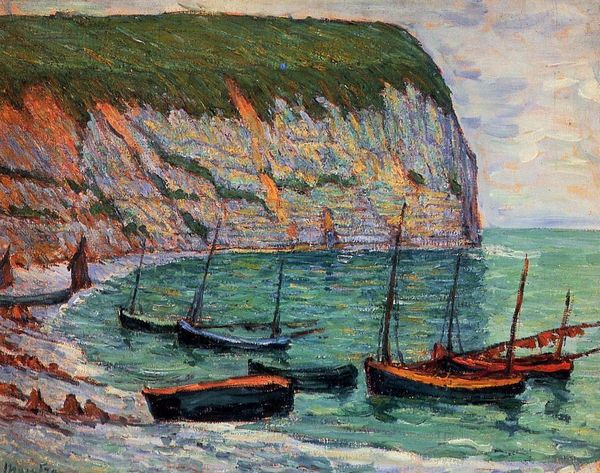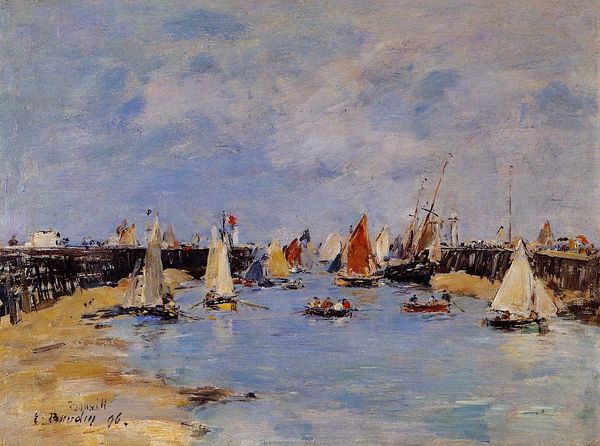
painting, plein-air, oil-paint
#
sky
#
painting
#
impressionism
#
plein-air
#
oil-paint
#
landscape
#
impressionist landscape
#
oil painting
#
ocean
#
seascape
#
sea
Copyright: Public domain
Curator: Look at this atmospheric seascape by Claude Monet, titled "Fishing Boats by the Beach and the Cliffs of Pourville," painted in 1882 using oil on canvas. Editor: It's striking, even turbulent. The heavy sky, the numerous boats scattered on the water... there’s a palpable sense of industry, but also fragility. The dark cliffs loom over a fairly grey sea; this is not the azure Mediterranean, but a landscape tied to hard work. Curator: Indeed, the material reality of the scene speaks volumes. Monet’s choice to depict working fishing boats offers a glimpse into the daily lives and labor of the coastal community at Pourville. His focus on maritime activity aligns with the Impressionists' broader interest in modern life and industry. Consider the consumption patterns too. These boats provided livelihoods. Editor: And visually, he has masterfully captured a fleeting moment. The composition uses a low horizon line, which amplifies the sky’s dramatic effect. There is the suggestion of sunlight, partially veiled by clouds. Monet clearly focuses on rendering the effect of the light and the atmosphere on form. I read this in terms of an attempt to arrest time through observation of light. Curator: His choice of the plein-air method speaks to that, to capturing an immediacy in labor. Monet removed himself from the studio setting and began making studies directly on site. He wanted to experience this transient location directly and, like any worker, be productive in it. But the final brushstrokes...are these really a worker's tool? Editor: Those rapid brushstrokes are characteristic of Impressionism and important formally! They help suggest the movement of water and the ephemeral nature of the light. Each dab of paint contributes to an overall impression rather than meticulously defining objects. Semiotically speaking, they serve more as signs of movement. Curator: Perhaps the painting romanticizes that work. The materiality of paint does somewhat elevate these objects. Are we to interpret the visible brushstrokes and Monet’s decision to portray an industrialized process—fishing—as merely surface appeal, a spectacle for urban art consumers, removed from these realities of labor? Editor: Possibly, yet the painting is ultimately an aesthetic experience. It offers a chance to consider, through color, form, and light, our relationship to nature and temporality. Curator: An interpretation which highlights the painting’s place within a consumerist economy—a decorative object as much as an evocative one. Food for thought, or for market value, in both respects.
Comments
No comments
Be the first to comment and join the conversation on the ultimate creative platform.


